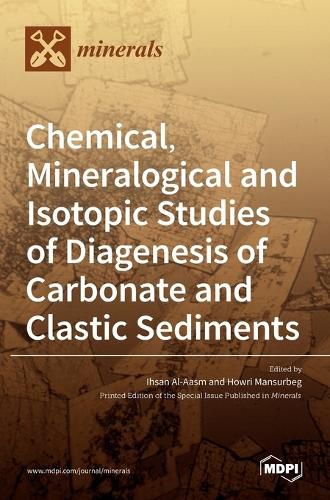Readings Newsletter
Become a Readings Member to make your shopping experience even easier.
Sign in or sign up for free!
You’re not far away from qualifying for FREE standard shipping within Australia
You’ve qualified for FREE standard shipping within Australia
The cart is loading…






This title is printed to order. This book may have been self-published. If so, we cannot guarantee the quality of the content. In the main most books will have gone through the editing process however some may not. We therefore suggest that you be aware of this before ordering this book. If in doubt check either the author or publisher’s details as we are unable to accept any returns unless they are faulty. Please contact us if you have any questions.
Diagenesis of carbonates and clastic sediments encompasses the biochemical, mechanical, and chemical changes that occur in sediments subsequent to deposition and prior to low-grade metamorphism. These parameters which, to a large extent, control diagenesis in carbonates and clastic sediments include primary composition of the sediments, depositional facies, pore water chemistry, burial-thermal and tectonic evolution of the basin, and paleo-climatic conditions. Diagenetic processes involve widespread chemical, mineralogical, and isotopic modifications affected by the original mineralogy of carbonate and clastic sediments. These diagenetic alterations will impose a major control on porosity and permeability and hence on hydrocarbon reservoirs, water aquifers, and the presence of other important economic minerals. In this Special Issue, we have submissions focusing on understanding the interplay between the mineralogical and chemical changes in carbonates and clastic sediments and the diagenetic processes, fluid flow, tectonics, and mineral reactions at variable scales and environments from a verity of sedimentary basins. Quantitative analyses of diagenetic reactions in these sediments using a variety of techniques are essential for understanding the pathways of these reactions in different diagenetic environments.
$9.00 standard shipping within Australia
FREE standard shipping within Australia for orders over $100.00
Express & International shipping calculated at checkout
This title is printed to order. This book may have been self-published. If so, we cannot guarantee the quality of the content. In the main most books will have gone through the editing process however some may not. We therefore suggest that you be aware of this before ordering this book. If in doubt check either the author or publisher’s details as we are unable to accept any returns unless they are faulty. Please contact us if you have any questions.
Diagenesis of carbonates and clastic sediments encompasses the biochemical, mechanical, and chemical changes that occur in sediments subsequent to deposition and prior to low-grade metamorphism. These parameters which, to a large extent, control diagenesis in carbonates and clastic sediments include primary composition of the sediments, depositional facies, pore water chemistry, burial-thermal and tectonic evolution of the basin, and paleo-climatic conditions. Diagenetic processes involve widespread chemical, mineralogical, and isotopic modifications affected by the original mineralogy of carbonate and clastic sediments. These diagenetic alterations will impose a major control on porosity and permeability and hence on hydrocarbon reservoirs, water aquifers, and the presence of other important economic minerals. In this Special Issue, we have submissions focusing on understanding the interplay between the mineralogical and chemical changes in carbonates and clastic sediments and the diagenetic processes, fluid flow, tectonics, and mineral reactions at variable scales and environments from a verity of sedimentary basins. Quantitative analyses of diagenetic reactions in these sediments using a variety of techniques are essential for understanding the pathways of these reactions in different diagenetic environments.